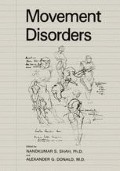Abstract
Public awareness often seems to lag behind the appearance of a phenomenon by several years. The history of tardive dyskinesia (TD) is a good example. Although the first reports of the syndrome started to appear in the early 1960s, it was not until the late 1960s and early 1970s that the psychiatric profession became aware of the existence of the condition. As the literature began to swell with ever-increasing numbers of reports on TD during the 1970s, there was gradually increasing concern over this apparently iatrogenic condition, which has created alarm over the use of neuroleptics. The pendulum may be starting to swing back in response to recent reports which suggest that TD is not always irreversible, and that the prognosis is usually better than was at first feared. This chapter will provide an overview of the prevalence, course, prognosis, and management of TD. Because of the enormous amount of relevant research data, the literature review will be selective.
Access this chapter
Tax calculation will be finalised at checkout
Purchases are for personal use only
Preview
Unable to display preview. Download preview PDF.
References
Balbessarini, R. J. (chairperson),1980 ADA Task Force on Tardive Dyskinesia, American Psychiatric Association, Washington, DC.
Barnes, T. R. E., Kidger, T., and Gore, S. M., 1983, Tardive dyskinesia: A 3-year follow-up study, Psychol. Med. 13: 71.
Casey, D. E., 1985, Spontaneous and tardive dyskinesia: Clinical and laboratory studies, J. Clin. Psychiatry 46 (4, Sec. 2): 42–47.
Casey, D. E., and Toenniessen, L. M., 1983a, Neuroleptic treatment in tardive dyskinesia: Can it be developed into a clinical strategy for long-term treatment? in: Modern Problems in Pharmacopsychiatry ( J. Bannet and R. H. Belmaker, eds), pp. 65–79, Karger, Basel.
Casey, D. E., and Toenniessen, L. M., 1983b, Tardive dyskinesia: What is the natural history? Int. Drug. Ther. Newsl. 18 (No. 4).
Chien, C-P., and Cole, J. O., 1973, Eighteen-months follow-up of tardive dyskinesia treated with various catecholamine-related agents, Psychopharmacol. Bull. 9: 38.
Chouinard, G., Annable, L., Ross-Chouinard, A., and Nestoros, J. N., 1979, Factors related to tardive dyskinesia, Am. J. Psychiatry 136: 79.
Crane, G. E., 1970, High doses of trifluoperazine and tardive dyskinesia, Arch. Neurol. 22:176. Crane, G. E., 1972, Pseudoparkinsonism and tardive dyskinesia, Arch. Neurol. 27: 426.
Crane, G. E., 1975, Tardive dyskinesia, A review, in: Neuropsychopharmacology ( J. R. Boissier, H. Hippius, and P. Pichot, eds.), pp. 346–354, Excerpta Medica, Elsevier, Amsterdam.
Degkwitz, R., Consbruch, U., Haddenbrock, S., Neusch, B., Oehlert, W., and Unsold, R., 1976, Therapeutische Risiken bei der Langzeitbehandlung mit Neuroleptika und Lithium: Klinische, histologische and biochemische Befunde, Nervenarzt. 47: 81.
Fann, W. E., Sullivan, J. L., and Richman, B. W., 1976, Dyskinesias associated with tricyclic antidepressants, Br. J. Psychiatry 128: 490.
Gardos, G., and Cole, J. 0., 1980, Overview: Public health issues in tardive dyskinesia, Am. J. Psychiatry 137: 776.
Gardos, G., and Cole, J. 0., 1983, Tardive dyskinesia and anticholinergic drugs, Am. J. Psychiatry 140: 200.
Gardos, G., Cole, J. O., Haskell, D. S., Moore, P., Bartell, Y., Salomon, M., and Schniebolk, S., 1982, A longitudinal study of early dyskinesia: Preliminary report. Proceedings of the 135th meeting of the American Psychiatric Association, Toronto 68D: 171.
Gardos, G., Perenyi, A., Cole, J. O., Samu, I., and Kallos, M., 1983, Tardive dyskinesia: Changes after three years, J. Clin. Psychopharmacol. 3: 315.
Gardos, G., Cole, J. O., Salomon, M., and Schniebolk, S., 1984, Severe tardive dyskinesia. Proceedings of the 137th meeting of the American Psychiatric Association, Los Angeles 59D: 140.
Guy, W., 1976, Abnormal involuntary movements scale, in: ECDEU Assessment Manual for Psychopharmacoloy, pp. 534–537, US Department of HEW, Publication No. 76–338, US Government Printing Office, Washington, DC.
Heinrich, K., Wegener, I., and Bender, H. J., 1968, Spate extrapyramidale Hyperkinesen bei neuroleptischer Langzeittherapie, Pharmacopsychiat. Neuropsychopharmacol. 1: 169.
Jeste, D. V., and Wyatt, R. J., 1979, In search of treatment for tardive dyskinesia: Review of the literature, Schizophrenia Bull. 5: 252.
Kane, J., Woerner, M., Weinhold, P., Wegner, J., and Kinon, B., 1982, A prospective study of tardive dyskinesia development: Preliminary results, J. Clin. Psychopharmacol. 5: 345.
Kane, J. M., and Smith, J. M., 1982, Tardive dyskinesia: Prevalence and risk factors 1959 to 1979, Arch. Gen. Psychiatry 39: 473.
Quitkin, F., Rifkin, A., Gochfeld, L., and Klein, D. F., 1977, Tardive dyskinesia: Are first signs reversible ? Am. J. Psychiatry 134: 84.
Smith, J. M., and Baldessarini, R. J., 1980, Changes in prevalence, severity, and recovery in tardive dyskinesia with age, Arch. Gen. Psychiatry 37: 1368.
Smith, J. M., Burke, M. P., and Moon, C. O., 1981, Long-term changes in AIMS ratings and their relation to medication history, Psychopharmacol. Bull. 17: 120.
Sovner, R. D., 1976, Dyskinesia associated with chronic antihistamine use, N. Engl. J. Med. 294: 113.
Waddington, J. L., Youssef, H. A., Molloy, A. G., O’Boyle, K. M., and Pugh, M. T., 1985, Association of intellectual impairment, negative symptoms and aging with abnormal involuntary movements (“tardive” dyskinesia) in schizophrenia: Clinical and animal studies, J. Clin. Psychiatry 46 (4, Sec. 2): 24–33.
Yagi, G., Ogita, K., Ohtsuka, N., Itoh, H., and Miura, S., 1976, Persistent dyskinesia after longterm treatment with neuroleptics in Japan, Keio J. Med. 25: 27.
Author information
Authors and Affiliations
Editor information
Editors and Affiliations
Rights and permissions
Copyright information
© 1986 Plenum Publishing Corporation
About this chapter
Cite this chapter
Gardos, G., Cole, J.O. (1986). Clinical Aspects of Tardive Dyskinesia. In: Shah, N.S., Donald, A.G. (eds) Movement Disorders. Springer, Boston, MA. https://doi.org/10.1007/978-1-4684-5038-5_10
Download citation
DOI: https://doi.org/10.1007/978-1-4684-5038-5_10
Publisher Name: Springer, Boston, MA
Print ISBN: 978-1-4684-5040-8
Online ISBN: 978-1-4684-5038-5
eBook Packages: Springer Book Archive

